There are many beautiful wooden houses inside and outside the NMBU campus. Many of these were designed by the architect Ole Sverre in the period from 1900 to 1920.
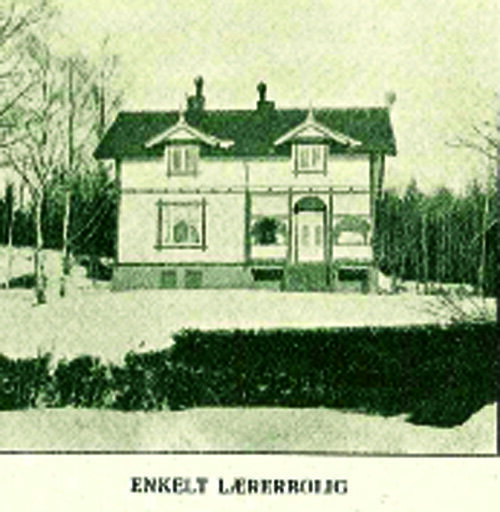
Wooden houses at NMBU designed by Ole Sverre
When the teaching staff at the former NMBU increased, there was a need for more houses. Ole Sverre was commissioned to design these. It is not clear whether Sverre wanted to construct the houses in the polychrome Neo-Renaissance style, so that they matched the rest of the school complex. The result shows that the traditional house style of the time was chosen. The houses around the turn of the century were built with late Swiss style and Dragon style.
Homes right after 1900
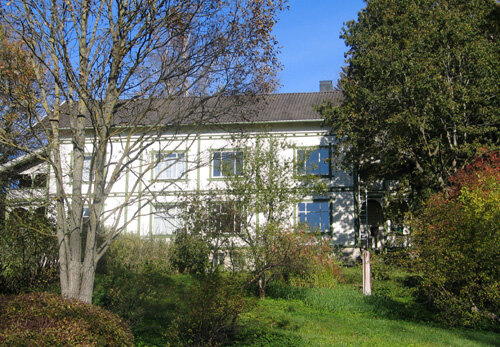
Six houses were built around the turn of the century. One of the houses was a residence for two families at Åkebakkehaugen (today Fougnerhaugen). The house was completed in 1899 and was early called ‘Palmyra’. In this dwelling, there were two head teachers; one was named Palmstrøm and the other Myhrvold. This is how the name Palmyra came about.
The double dwelling is divided by a partition wall that runs from the attic to the cellar. Each residence has three living rooms and a kitchen on the first floor. There are two bedrooms, an office, and a girls’ room on the second floor. In addition, there is an attic and a cellar. The building is over one and a half stories high with a low knee wall, a roof angle of 30 degrees, and a pronounced overhanging roof at the gables and eaves. The relatively high foundation is made of concrete with an externally sloping plaster. The facade structure is characterized by strong horizontal and vertical markings. The paneling on the 1st and 2nd floors is horizontal, while the paneling in the attic has vertical paneling. Three horizontal bands run around the building. A protruding corner post marks the transition to the foundation, and two of them mark the beam layers.
Vertical markings are especially noticeable on the corners, and a vertical line marks the division between the apartments. There are symmetrical three-frame windows in both stories and two one-frame windows in the basement corresponding with the windows above. The house is currently painted in light gray-white, with moss green trim. The decorative details such as the triangular fields in the gable tops, the scroll lists on the window sills, and the gable top figures and posts on the entrance steps are related to the design language Sverre used in several of the Swiss-style houses he designed at that time.
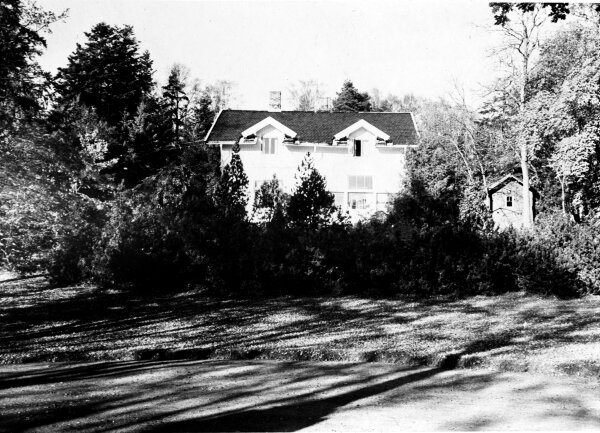
Almost simultaneously, a residence for a single family was built next to ‘Palmyra’ (1900). This house has the same room division as one of the houses in ‘Palmyra’, but the rooms on the first floor are somewhat smaller. This was done to accommodate an internal veranda. The house is not as symmetrical; there are some structured deviations in the shape and placement of windows and doors, but the colors and choice of materials are exactly like the neighboring house. Both of these houses are currently addressed at Fougnerbakken and are rented out to employees
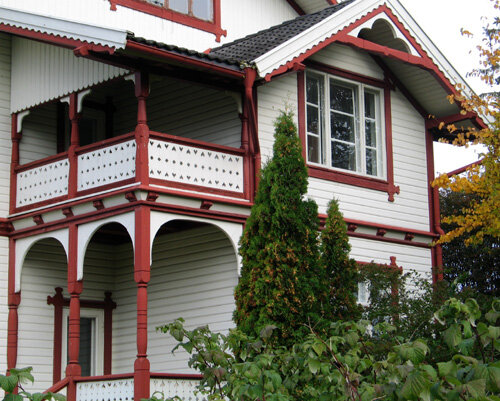
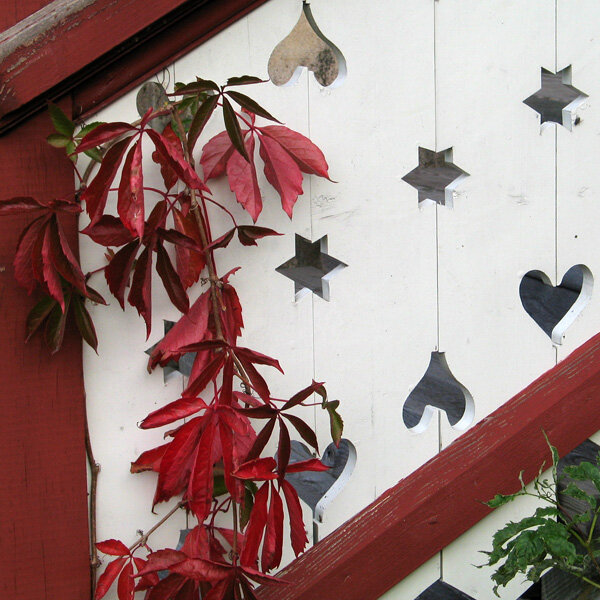
On the Experimental Field, a house was erected for two families. It is called Damgården (1900). This is a replica of ‘Palmyra’ and has the same room division with only simple variations in decoration. In this farm, the higher education secretary Klokk and building inspector Langballe lived for many years.
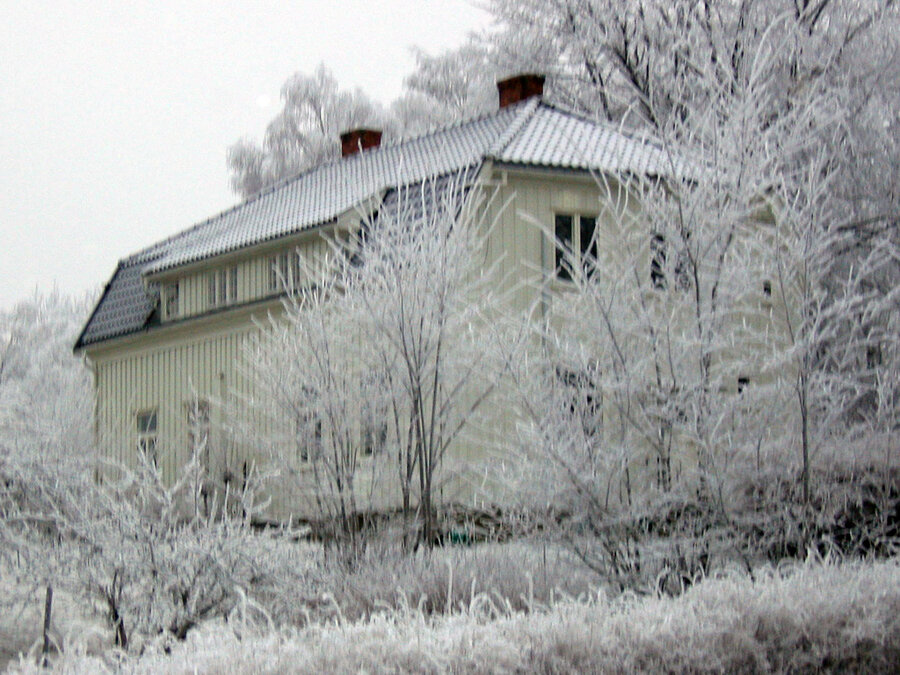
In 1902, a house for workers was erected on Hasselbakke, a small hill north of Urbygningen. The residence was intended to house the permanent workers of the horticulture department. The building is a one-and-a-half-story structure with a mansard roof covered with glazed, blue roof tiles. It contained two family apartments on the first floor and two smaller apartments on the second floor. The timber in the framework was sourced from two storehouses that previously stood between Cirkus and Urbygningen. The cellar wall consists of fieldstone below ground and brick above.”
The building has a stately shape. The white, tightly closed structure with a steep mansard roof, almost without overhangs, points towards the form ideals of the Baroque and Art Nouveau styles. The same is true for the robust carpenter’s paneling and the glazed roof tiles. This is an early example of Ole Sverre’s orientation towards Neo-Baroque that characterized his buildings right after the turn of the century. The shape of the building has given it the name Likkista "The Coffin.
Homes built after 1910
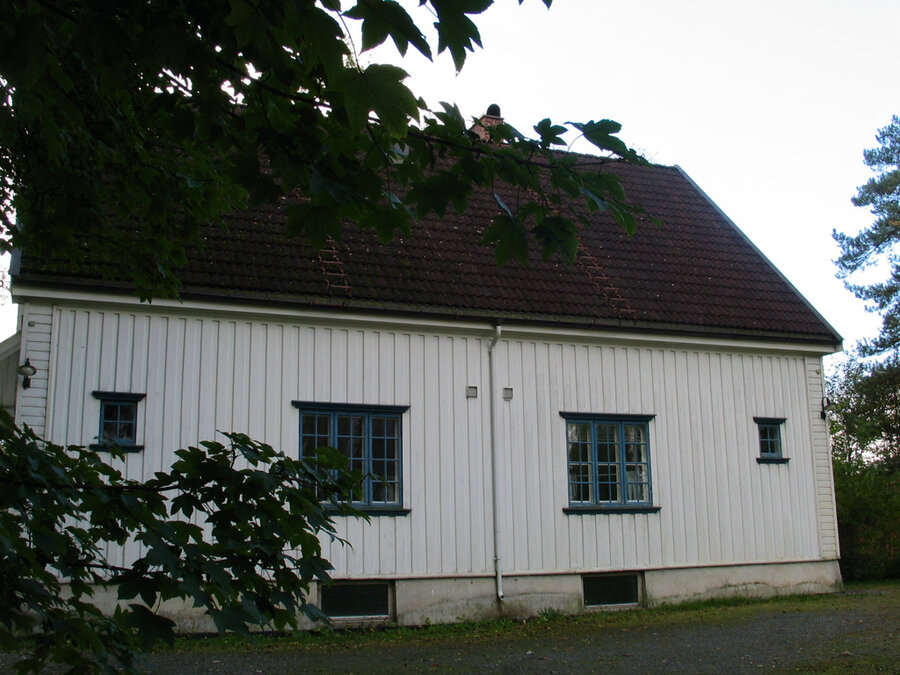
Ole Sverre received new assignments when the school was expanded around 1912. This resulted in several wooden houses. A house for two families was erected at Åkebakke (‘Åkebu’) (1912). Åkebu contains an apartment with five rooms and one with four. The building has a steep roof angle (45 degrees) with a discreet curve at the bottom of the roof surfaces. The wall surfaces are clad with heavily profiled vertical paneling.
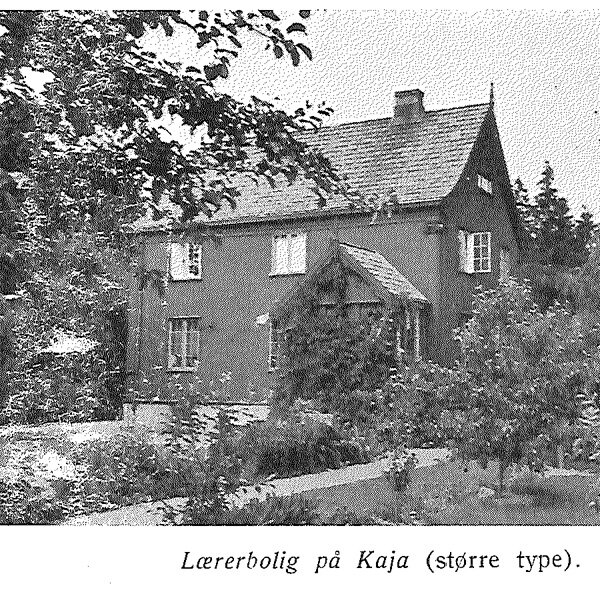
The house is elevated by high gables and has symmetrical two-frame windows with small panes. It is close to associating the building with older Norwegian wooden architecture in general. However, the curved roof, the gables, the pilasters, and the strict symmetry also point in an urban, classical direction. Towards a simple and relaxed Neo-Baroque with certain national historical undertones, inspired by the area around Bergen.
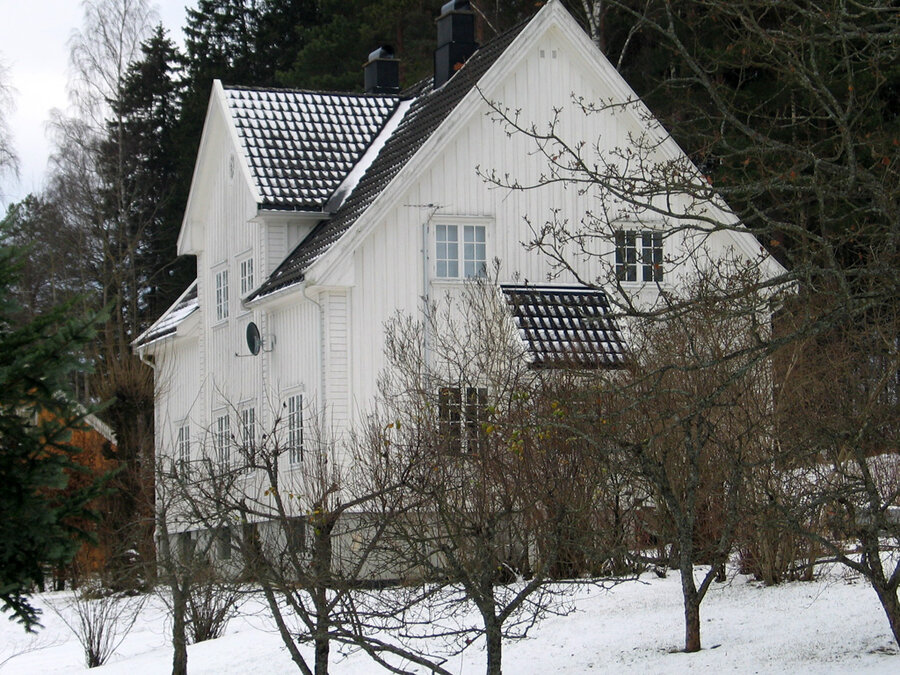
Two years later, a residence for two families was built at Utvegen 6 Assistentboligen (The Assistant’s House) in 1914. Assistentboligen is essentially a copy of Åkebu. The dimensions are the same, but here the entire attic has been developed. Therefore, there are two more rooms in this house.
The architect has chosen to give the building a steep roof angle of 45 degrees with moderate overhangs at the eaves and gable. The facade is symmetrically constructed. There are pilaster-like vertical markings at the corners and by the door openings, and a wide horizontal band beneath the eaves. The wall surfaces are clad with horizontal weatherboard, and the windows are standard two-frame with small-pane divisions. The building bears the hallmarks of a light classical form of late ‘war baroque’ with a certain national glance to an older Western Norwegian, especially Bergen, panel architecture. The house is white.
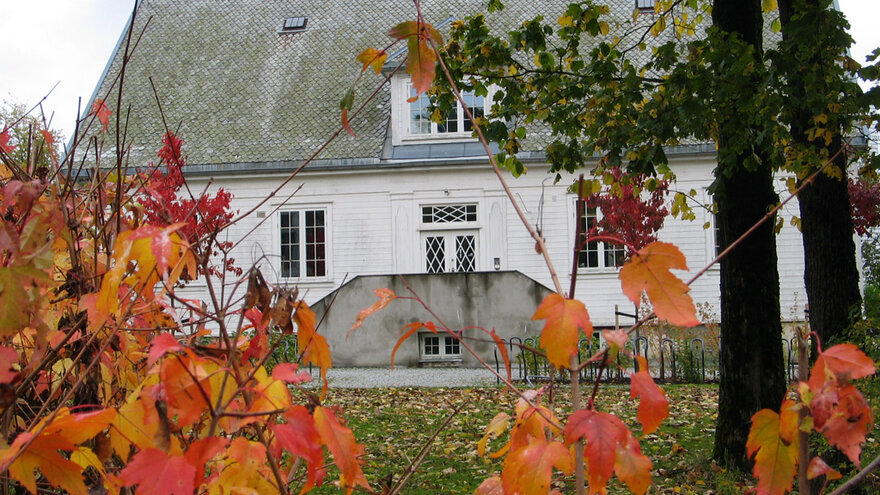
In 1917, the machine hall was extended with a cross-wing. The machine hall was built in 1910. Today, Vitenparken (the Science Park) is located where the machine hall used to be. The cross-wing consisted of a one-and-a-half-story building with a timber frame and a concrete foundation. The building included, among other things, two offices for the machine testing institute and a post office at the northern end and is called Posthuset (The Post building) This building has Økonomibygningen and Tivoli as its close neighbors.
Homes at Kajafeltet
Around 1919, there were new expansions and Ole Sverre designed six family houses on Kajafeltet. The houses at Kajavegen (Skogveien) 35, 24, 23, 37, and 22 were built in 1921, while the house at Kajavegen 20 was built in 1923. The houses are not exactly alike; they differ, among other things, in houses that are intended for teachers below the professor level. These houses have a simpler facade.
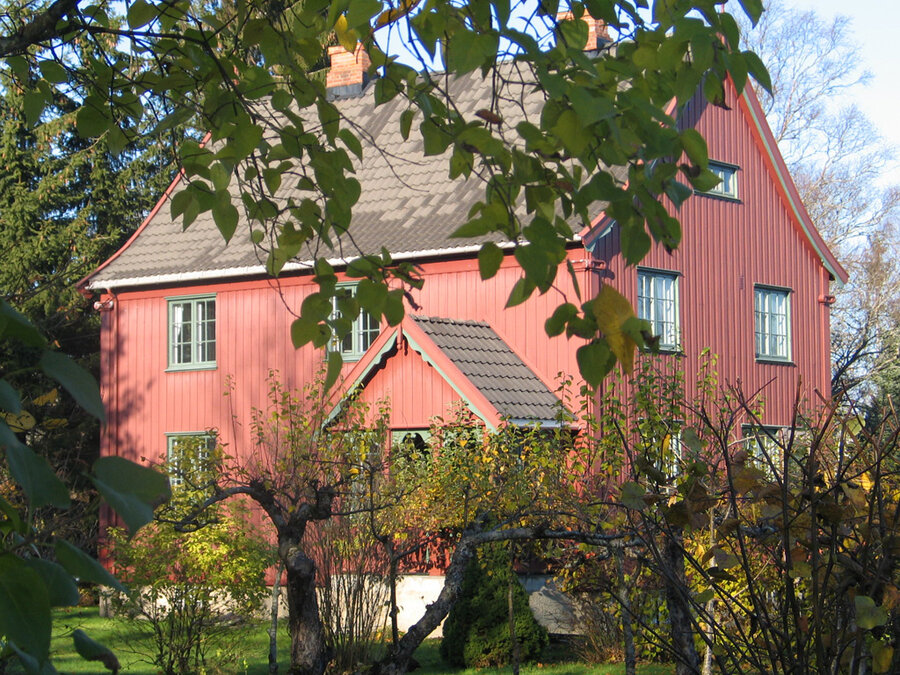
The house at number 35 is a residence for a professor and one of three alike. It is a two-story building with a full basement. The steep, sloping roof is covered with clay tiles. Characteristic of the building is the dense, robust structure with moderate roof overhangs.

The wall surfaces have heavily profiled vertical paneling, the windows are two-frame and small-paned, with a fixed regular placement. The character of the house reflects key features in the robust, imaginative character that characterized much of the nationally historic architecture that Sverre himself had been involved in launching around 1907
Kajavegen 22 is a replica of the three identical houses. Only minor details have been changed, but the expression is the same.
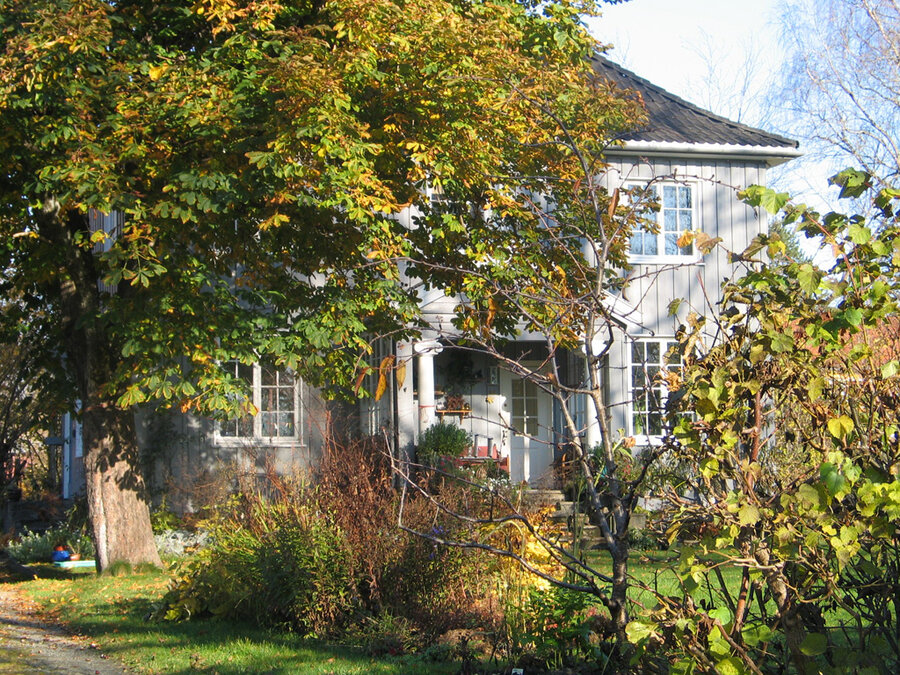
Kajavegen 20 does not have the same design language. This is a house for teachers below professor level and is known as "Kassererboligen" (the cashier’s residence.) With its arches and eaves endings, it leans more towards the style that is ten years older, which can be seen in Åkebu and the assistant’s residence.

All the houses outside the University area are now privately owned.
Wooden houses that are not designed by
Ole Sverre
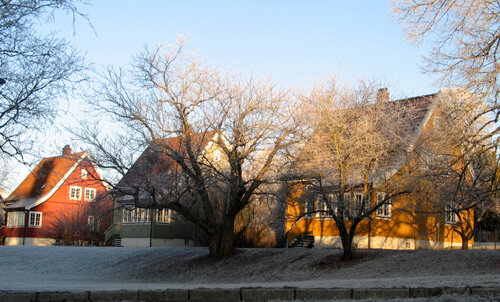
In 1919, three identical single houses and one duplex were also built in the kitchen garden near Svanedammen. These houses were to be used by the dairy manager, stable master, driver, electrician, and construction foreman. Today, the houses are called Trillinghusene (the Triplet Houses) and Stallmesterboligen (the Stable Master’s Residence) The houses are designed in a style almost identical to the other houses that were built during this period.
Trillinghusene have a steep roof angle and are somewhat adapted to Posthuset that was built in the same period. They are built in a Norwegian ‘small house style’ with inspiration from the countryside and neoclassicism. Stallmesterboligen is built with a half-hipped roof and in a mixed style between Art Nouveau and neoclassicism.
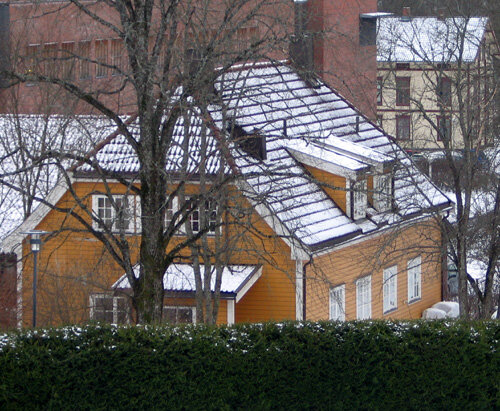
By the construction of these four houses, a pleasant wooden house environment was created, consisting of several small houses between the large operational building and the smithy.
Ole Sverre was the architect of the The Higher Agricultural School in Ås. But these four houses were designed and built by senior teacher Sørsdahl. Wooden houses that were erected earlier and also not designed by Ole Sverre are Gartnerboligen (the Gardener’s Residence and Parkgården.
Senior teacher Landmark was the first to build a private residence on the grounds of NMBU. The house was purchased as the director’s residence in 1908. The house was located in the area between Parkgården and RV 152, but today it has been demolished.
The information is sourced from ‘Bygninger ved Norges Landbrukshøgskole tegnet av Ole Sverre’ written by Erik Aas jr. in 1996 and the NLH anniversary books.”
About the Swiss style
Initially, the houses in so-called Swiss style were built with a symmetrical floor plan, which often was a cross plan with a veranda in the middle; this evolved to become asymmetrical. Originally, the roof angle was low, but it gradually became higher.
The decorative details in the facade makes it easy to recognize the style. There are elaborate planks and moldings, friezes, and ornamental work placed under the eaves, around the windows, or in bands on the facades. The details were often highlighted with colors, and color samples taken from facades show that it was common to use three colors. Characteristic features of the Swiss style:
- Emphasizing the properties of wood as a building material
- Detailed decor with scroll saw cuttings
- High foundation and tall cross-post windows
- Large ceiling height in the rooms
- Steep and protruding roofs that were meant to protect all the intricate fragile details from weather and wind
- Glass verandas, balconies, gable dormers, and a rich decorative external trim work that is emphasized with colors in the painting
- Colored and patterned glass Supporting pillars, beams, and rafters from which the structural joint was separated, often with colors
- Often spires and towers
The Swiss style was not a typical upper-class style, but something that suited well for worker’s housing, station buildings, villas, barns, and tourist hotels.
The house type and style were well-suited for mass production.
Machines and electric saws made it possible to some extent to mass-produce parts of the resource-intensive decorative elements that the style required.
From the introduction of the Swiss style in Norway in the 1840s and towards the turn of the century, the style gradually evolved. Initially an imported style from Germany and the Swiss mountains, the style changed domestically to become more Norwegian. By the end of the century, this resulted in the Dragon style, which unmistakably had Norwegian characteristics.
Sources: Truls Aslaksby: "Den nye træstilen", Fortidsvern 1/84 (magazine). Ruth Hamran: "Sveitser-Huse", Fortidsvern 1/84.
Drange, Arnesen, Brænne: "Gamle trehus - historikk, reparasjon og vedlikehald", Universitetsforlaget. 1992.